 W
W12 Fife Lane, Miramar, Wellington was the first state house under the First Labour Government of New Zealand. Completed in 1937, the three-bedroom, one-bathroom house was built with plastered brick walls and a concrete tile gable roof and sited on a 505 m2 (5,440 sq ft) section The building is classified as a "Category I" historic place by the New Zealand Historic Places Trust.
 W
WAll Saints' Church in Hokitika, New Zealand, is an Anglican church. It is a Category I registered building on the West Coast of New Zealand.
 W
WThe Balclutha Road Bridge, which spans the Clutha River in Balclutha, South Otago, New Zealand, is one of the best-known road bridges in New Zealand's South Island. The bridge is often simply known as "The Clutha Bridge", despite the fact that there are numerous bridges across the country's second longest river.
 W
WBaring Head Lighthouse is a concrete lighthouse at Baring Head in the Wellington Region of the North Island of New Zealand, with an LED beacon powered by mains electricity. It is owned and operated by Maritime New Zealand, and can be accessed via walking tracks in the southern area of the East Harbour Regional Park, south of Wainuiomata.
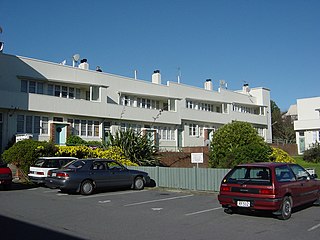 W
WThe Berhampore State Flats at 493–507 Adelaide Road, Berhampore, Wellington, New Zealand, are an example of mass housing designed in the international style. The flats were designed by F. Gordon Wilson, chief architect at the Department of Housing Construction.
 W
WBirchville Dam is believed to be the second unreinforced concrete arch dam built for water supply in New Zealand. It was built in 1930 for the Upper Hutt Borough Council to provide increased water capacity for the borough and replaced a water supply weir built in 1913–1914 at the same location on Clarke's Creek, near Birchville. Decommissioned in 1958, when Upper Hutt joined the Wellington regional water scheme, this dam is now an historic attraction on the Cannon Point Walkway.
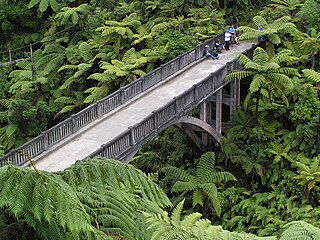 W
WThe Bridge to Nowhere is a concrete road bridge spanning the Mangapurua Stream in Whanganui National Park, North Island, New Zealand. It has no roads leading to it, but it is a popular tourist attraction, accessible by mountain bike or tramping on a variety of different tracks, or by boat or kayak, followed by a 45-minute walk along maintained bush trails.
 W
WThe Church of the Good Shepherd on the shores of Lake Tekapo on the South Island of New Zealand is a small Anglican church used by various denominations. Built in 1935 as a memorial church to commemorate early settlers, it is one of the most photographed items in the country. It has a Category I heritage registration by Heritage New Zealand.
 W
WThe former Post and Telegraph Building, now known as Chaffers Dock Apartments, is a building located in Wellington, New Zealand.
 W
WHampton Court is a historic apartment building in Auckland, New Zealand. It was designed by Surrey S. Alleman. Alleman was awarded the NZIA Gold Medal in 1930 for this building.
 W
WThe Kenneth Myers Centre is a landmark building in Auckland, New Zealand. Originally known as the 1YA Building and then the Television New Zealand building, the building was purchased by the University of Auckland and modified in 2000–01. Located in Shortland Street in the Auckland CBD, the "strikingly original structure" built in 1934 is registered by Heritage New Zealand as a Category I building. The Gus Fisher Gallery is located in the building.
 W
WKingseat Hospital was a psychiatric hospital that is considered to be one of New Zealand's notorious haunted locations with over one hundred claims of apparitions being reported, as of 2011. It is located in Karaka, New Zealand, south of Auckland and since 2005 has been used as a site for Spookers; and since 2013 a site for Asylum Paintball and Laser Combat; three New Zealand attractions. Spookers is believed to be Australasia's only haunted attraction scream park as of 2011, and "the number 1 Haunted Attraction in the Southern Hemisphere". According to stuff.co.nz, Kingseat Hospital is considered one of the most haunted locations in New Zealand.
 W
WThe Kotuku Model Bungalow is a historic building in a historic reserve in the Grey District on the West Coast of the South Island of New Zealand.
 W
WThe Dunedin Law Courts is a notable historic building in central Dunedin, in the South Island of New Zealand. They are located at the corner of Lower Stuart Street and Anzac Square, directly opposite the city's historic railway station. Since 1902, the building has been used as the city's law courts, and contains four court rooms, including the ornate High Court, as well as housing the offices and library of the Law Society.
 W
WLopdell House is situated next to Te Uru Waitakere Contemporary Gallery as part of the Lopdell Precinct arts centre in Titirangi, Auckland. It was first opened as Hotel Titirangi in 1930. In 1942 it was bought by the Ministry of Education and became a school for the deaf, and then a teacher's residential centre named Lopdell House. The Waitemata City Council purchased it in 1983 and it reopened in 1986 as an arts centre. Adjacent to the house is a statue of Titirangi founder, Henry Atkinson.
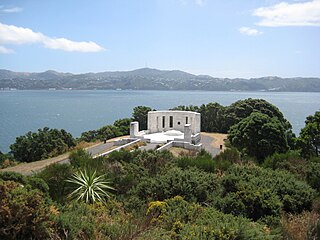 W
WThe Massey Memorial is the mausoleum of New Zealand Prime Minister William Massey, at Point Halswell on the Miramar Peninsula, Wellington, New Zealand.
 W
WThe Mohaka Viaduct is a railway viaduct spanning the Mohaka River in northern Hawke’s Bay, on the East Coast of the North Island of New Zealand, near the small settlement of Raupunga. It was built between 1930 and 1937 by the Public Works Department (PWD) for the New Zealand Railways Department (NZR). It is 276.8 metres (908 ft) in length, and at 95 metres (312 ft), is the tallest viaduct in Australasia.
 W
WThe Mount Victoria Tunnel in the New Zealand capital city of Wellington is 623 metres long and 5 metres (16.4 ft) in height, connecting Hataitai to the centre of Wellington and the suburb of Mount Victoria, under the mount of the same name. It is part of State Highway 1.
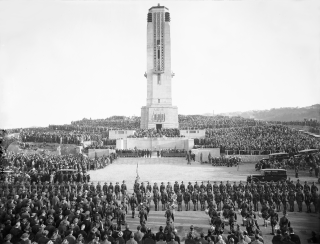 W
WThe National War Memorial of New Zealand is located next to the New Zealand Dominion Museum building on Buckle Street, in Wellington, the nation's capital. The war memorial was dedicated in 1932 on Anzac Day in commemoration of the First World War. It also officially remembers the New Zealanders who gave their lives in the South African War, World War II and the wars in Korea, Malaysia and Vietnam.
 W
WThe New Zealand Dominion Museum building was completed in 1936, and is located on Buckle Street in Wellington next to the National War Memorial. The building originally housed the National Museum, the National Art Gallery of New Zealand and the New Zealand Academy of Fine Arts. It currently houses part of the Massey University Wellington Campus.
 W
WThe Peterborough Centre, the former Teachers' College Building, is located on the corner of Peterborough and Montreal Streets in Christchurch, New Zealand. It is a Category II heritage building. As a result of the February 2011 Christchurch earthquake, it suffered NZ$12 million in damage.
 W
WPetone Settlers Museum is a local history museum located in the Wellington Provincial Centennial Memorial, a historic building in Petone, Lower Hutt, New Zealand. The building was originally constructed to mark the Wellington province's centennial commemorations; the museum opened in the building in 1977. The building was extensively refurbished in 2016.
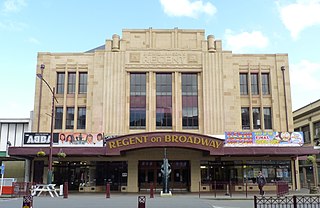 W
WThe Regent on Broadway is a large theatre in Palmerston North, New Zealand, named so because it is the Regent Theatre on Broadway Avenue.
 W
WThe Robert McDougall Art Gallery is a heritage building in Christchurch, New Zealand. It was designed by Edward Armstrong and it opened in 1932. It is a Category I heritage building listed with Heritage New Zealand.
 W
WThe Runanga Miners' Hall is a hall in the town of Runanga, on the West Coast of New Zealand's South Island. The current structure dates from 1937, and replaced an early miners' hall from 1908 that was destroyed by fire. The hall is notable for its place in the history of the organised labour movement in New Zealand, and was granted historic place category 1 status by Heritage New Zealand in 2013.
 W
WThe Hotel St. George was once one of Wellington, New Zealand's top hotels and a prominent building.
 W
WSt Gerard's Church and Monastery collectively form one of Wellington's most distinctive and iconic landmarks. Located on Mount Victoria in Wellington, both buildings are classified as "Category I" historic places by the New Zealand Historic Places Trust. They are built on the site of a sixteen-roomed house and property owned by James Edward Fitzgerald who some claim to be New Zealand's first Prime Minister.
 W
WSt Elmo Courts was a residential high rise building constructed in 1930 in the city centre of Christchurch, New Zealand. Used mainly as an office building in later years, it had a Category II heritage listing by the New Zealand Historic Places Trust. It was demolished in March 2011, having suffered significant damage in the 2010 Canterbury earthquake and more damage in the subsequent February 2011 Christchurch earthquake.
 W
WSt. Michael's Church is a heritage church in Remuera, Auckland, New Zealand. It is the home of St. Michael's Parish.
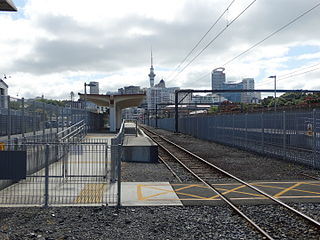 W
WThe Strand Station, also referred to as Auckland Strand Station, is a railway station located on the eastern edge of the Auckland CBD. It currently serves as the northern terminus of the Northern Explorer long-distance service between Auckland and Wellington, operated by The Great Journeys of New Zealand. Suburban services do not pass through the station, but it can serve as a backup for Britomart Transport Centre, the city's main railway station since 2003, during times of disruption.
 W
WThe Titahi Bay Transmitter, which until 16 February 2016 was New Zealand's second tallest structure, transmitted AM radio signals from a 220 metres tall radio mast insulated against ground at Titahi Bay in New Zealand. The station which previously had three masts, now consists of only one mast with a height of 137 metres. A third - smaller - mast with a height of 53 metres was toppled on 10 November 2015. The tower and its surrounding buildings were opened in 1937. Five radio stations broadcast from the transmitter:Radio New Zealand National on 567 kHz Southern Star and AM Network on 657 kHz Wellington Access Radio on 783 kHz Newstalk ZB on 1035 kHz Te Upoko O Te Ika on 1161 kHz
 W
WTūrangawaewae Marae is located in the town of Ngāruawāhia in the Waikato region of the North Island of New Zealand. A very significant marae, it is the headquarters for the Māori King Movement and the official residence and reception centre of the head of the Kīngitanga - the current Māori King, Tuheitia Paki.
 W
WVictoria Mansions is a residential Category II heritage building in central Christchurch, New Zealand.
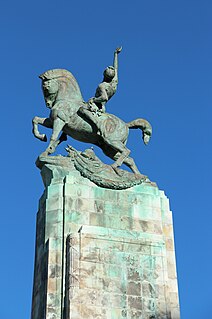 W
WThe Wellington Cenotaph, also known as the Wellington Citizens' War Memorial, is a war memorial in Wellington, New Zealand. Commemorating the New Zealand dead of World War I, and World War II. it was unveiled on Anzac Day 1931 and is located on the intersection of Lambton Quay and Bowen Street, by the New Zealand Parliament Buildings. It features two wings decorated with relief sculptures and is topped with a bronze figure on horseback. Two bronze lions and a series of bronze friezes were later added in commemoration of World War II. On 18 March 1982, it was registered as a Category I historic place with registration number 215. It is a focus of Anzac Day commemorations in the city.
 W
WWellington railway station is the main railway station serving Wellington, New Zealand, and is the southern terminus of the North Island Main Trunk, Wairarapa Line and Johnsonville Line.